Insadong Sagwanamu (인사동사과나무)
10.7Km 2021-03-29
24-1, Insadong 14-gil, Jongno-gu, Seoul
+82-2-722-5051
This is where you can dine on the outdoor terrace. This restaurant's signature menu is steak. This Western dishes restaurant is located in Jongno-gu, Seoul.
Nuri (누리)
10.7Km 2019-11-26
23, Insadong 14-gil, Jongno-gu, Seoul
+82-2-736-7848
Located in the neighborhood of Insa-dong, traditional Korean lunch box and tea restaurant Nuri brings out the true beauty of hanok while implementing western dining culture with tables and chairs.
Nuri uses the finest grains directly from agricultural regions throughout the country, offering nutritious rice along with mildly seasoned side dish menus, taking advantage of the ingredients' natural flavors. Nuri uses its effective take-out and delivery system to cater to businesses and events.
Nwijo(뉘조)
10.7Km 2024-12-11
27, Insadong 14-gil, Jongno-gu, Seoul
+82-2-730-9311
Nwijo (뉘조) is a Korean restaurant specializing in wild vegetable cuisine. The name ‘Nwijo’ means ‘the god of the silkworm,’ and likens wild vegetables to silkworms in that both can be eaten in their entirety. The restaurant serves original full-course Korean meals that are prepared using hundreds of kinds of wild vegetables, including special seasonal vegetables.
A typical full-course meal starts with delicious pumpkin porridge, followed by seasoned wild vegetables, root vegetable ssam (condiments wrapped in vegetable leaves), slices of boiled meat, and steamed lotus leaf-wrapped rice served with jjigae (Korean stew) and various side dishes. This kind of traditional feast is pleasing to both the eye and the palate and is topped off with sikhye (traditional sweet rice drink). Lunch specials are also available.
Sarangchae (사랑채)
10.7Km 2016-12-30
6, Insadong 16-gil, Jongno-gu, Seoul
+82-2-737-1155
Sarangchae is located in Insa-dong, one of the most famous neighborhoods visited by tourists. Majority of the restaurant's customers are foreigners, and they offer reasonably priced Korean dishes that are highly popular among foreign visitors.
Bukchon-ri Dullegol (북촌리둘레골)
10.7Km 2021-03-19
44 Insadong 14-gil Jongno-gu Seoul
+82-2-747-9700
A restaurant with Korean traditional house-themed interior design. The representative menu is Korean table d''hote. This is a Korean cuisine located in Insa-dong, Seoul.
La rue Yonsei-ro (연세로)
10.7Km 2020-03-13
Yonsei-ro, Seodaemun-gu, Seoul-si
+82-2-120
Cette route vous mène de la station de métro Sinchon directement à l’université Yonsei. Comme des branchements de racines d’arbres, les nombreuses rues divergent toutes vers la route principale. En 1988, la rue de l’université de Yonsei a été désignée comme la « route que l’on veut parcourir ». Depuis, cette fameuse rue s’est beaucoup améliorée, elle est indiquée sur les cartes touristiques et les commerces en font sa promotion. Un visiteur dans cette zone, a un choix pléthorique de restaurants, cafés et boutiques. Durant l’après-midi, vous pouvez également apprécier le goût de la nourriture des petits stands qui s’alignent sur le trottoir.
Najugomtang&Oudon (나주곰탕&오우돈)
10.7Km 2021-03-30
19, Sinchon-ro 18-gil, Mapo-gu, Seoul
+82-2-336-6824
It is a place where you can eat a variety of Korean dishes. The best menu at this restaurant is Naju beef bone soup. This Korean dishes restaurant is located in Mapo-gu, Seoul.
Musée de l’université féminine d'Ewha (이화여자대학교박물관)
10.7Km 2022-09-14
52, Ewhayeodae-gil, Seodaemun-gu, Seoul-si
+82-2-3277-3152
Le musée de l’université féminine de Ewha a été inauguré en 1935 dans le but de préserver l’héritage coréen. Au début, des objets en lien avec l’art folklorique, le travail du bois traditionnel et la poterie étaient exposés dans le hall du bâtiment pincipal de l’université afin d’empêcher leur confiscation. Suite à cela, un musée fut ouvert pour conserver et exposer la collection. Depuis 1972, une exposition de la collection du musée a eu lieu chaque année, et depuis 1996, le musée organise également une exposition spéciale qui prend pour thème une catégorie d’objets de l’héritage culturel. D’autres expositions de moindre importance ont lieu fréquemment afin de sensibiliser le public sur la culture et les arts traditionnels coréens. En tant que centre de recherche sur la céramique, le musée concentre ses resources sur la recherche et l’excavation de fours. Afin de préserver et d’étudier des reliques de valeur historique, les équipes de fouilles ont voyagé dans diverses régions du pays pour étudier des sites historiques et découvrir des artefacts de valeur. Grâce à la publication de livres et de rapports sur ses découvertes, le musée a contribué à améliorer la connaissance et la sensibilité à propos de l’héritage culturel coréen dans le monde universitaire et parmi le public.
Jirisan Restaurant (지리산)
10.7Km 2019-08-01
30, Insadong 14-gil, Jongno-gu, Seoul
+82-2-723-4696
Jirisan is one of the representative Korean restaurants in Insa-dong, an area known for its traditional culture. One of the trademarks of this restaurant, besides its amazingly delectable bean and tofu dishes, is a wooden sign that welcome guests into a neat and cozy interior.
Each day, fresh beans are ground at the restaurant to prepare dishes such as soybean paste, soft tofu, and bean-curd tofu stew. Bean-curds are prepared by using seawater, which gives the tofu a unique flavor. The fresh and clean taste of the tofu is one of the many reasons that choosey tofu aficionados flock to the restaurant.
Not just limited to tofu, Jirisan presents customers with a full-range of side dishes such as kimchi, japchae (glass noodles with sautéed vegetables), cucumber kimchi, seasoned seaweed, braised lotus roots, roasted yellow corbinas (a type of fish), leafy greens, bean-curd stew, and more. The restaurant gives visitors a chance to experience a hearty traditional Korean-style meal, but has thoughtfully toned down its seasonings to appeal to a wider audience (particularly those not used to spicy foods).
One of the recommended menu items is the Jirisan set meal, which offers diners the chance to sample foods that are popular in the Jirisan region. Adventurous diners may want to try the sea urchin soup or dried Pollack soup.
The restaurant, originally a traditional Korean house, has been modified over the years to better suit the needs of its customers. The walls surrounding the structure were removed and a glass ceiling was installed to allow guests to enjoy the natural light of the sun as they sample some of the area’s best traditional Korean cuisine.
Ihwajang (이화장)
10.7Km 2018-02-05
1-2, Ihwa-dong, Jongno-gu, Seoul-si
Ihwajang est une résidence privée ayant appartenu à Lee Seung-man, le premier président de la République de Corée. Cette résidence transformée en musée est un temoignage sur son style de vie et sur l’histoire de la fondation de la république. Les principaux objets exposés ici sont ses habits, des albums d’articles de revues, de vieilles armoires de cuisine, des plats en laiton et ses armoires à vêtements qui ont été faites à partir de carton. Les visiteurs peuvent également voir, la chambre, le bureau, la cuisine et la salle de réception de l'ancien président.

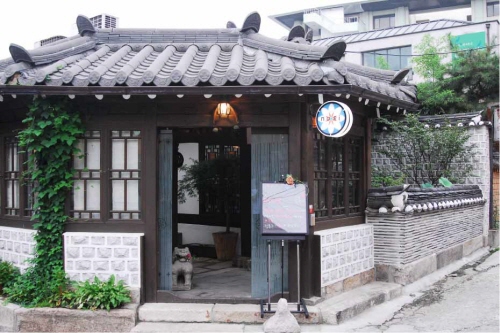


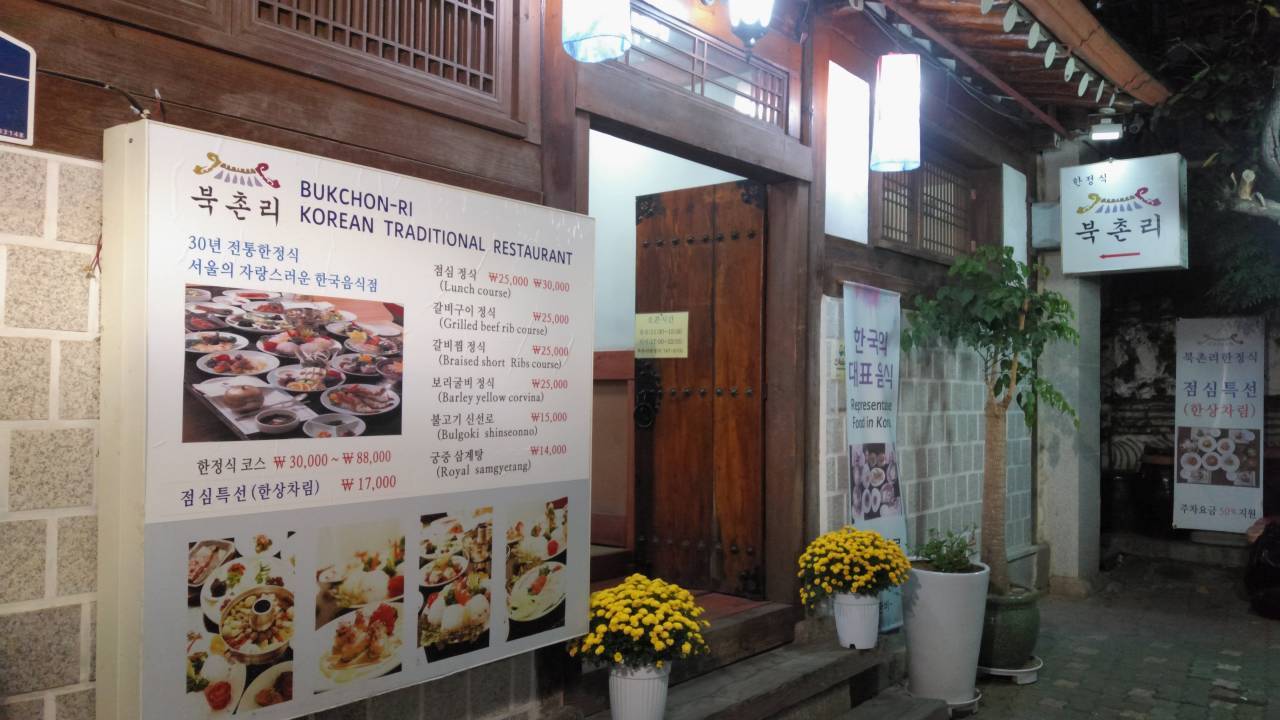
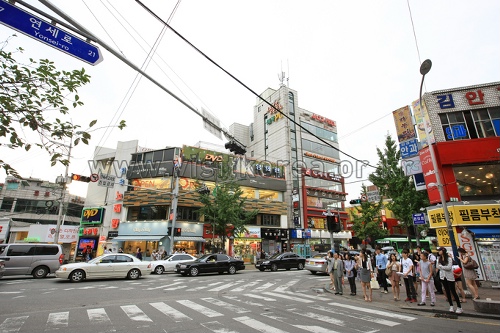

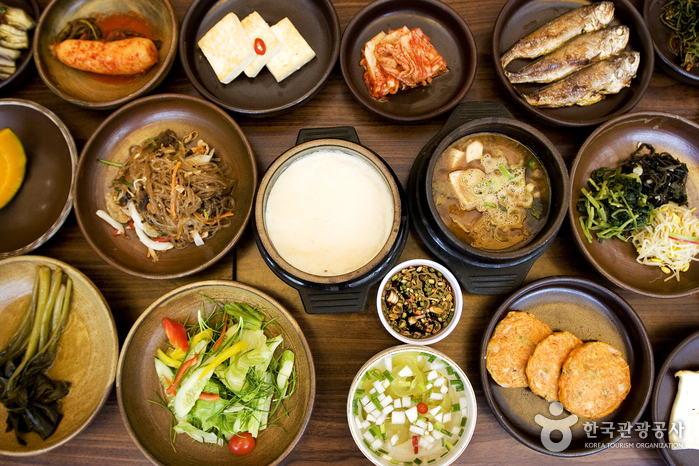
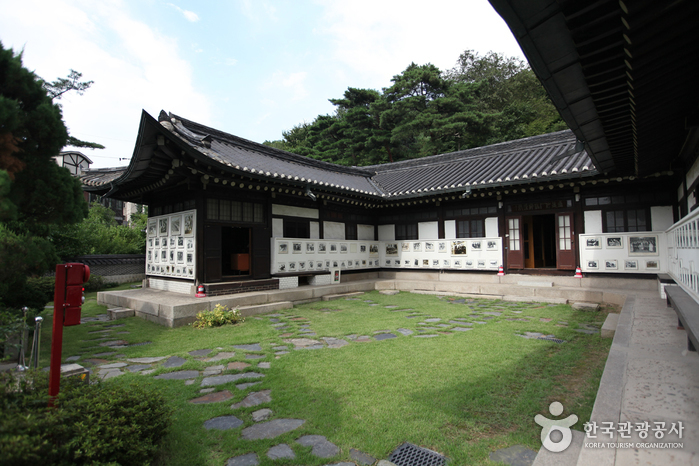
 Français
Français
 한국어
한국어 English
English 日本語
日本語 中文(简体)
中文(简体) Deutsch
Deutsch Español
Español Русский
Русский